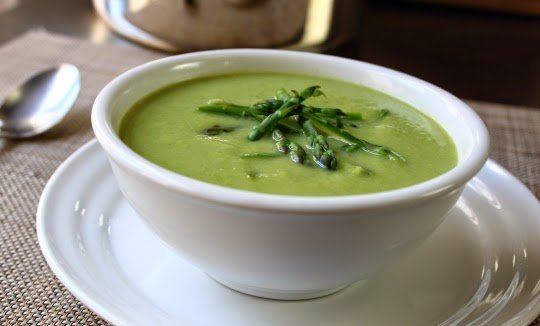One of the hardest things for me personally with adjusting to my Crohn’s-constricted diet has been the lack of spice. Before I was diagnosed I used to eat a wide variety of “spicy” peppers as snacks (pepperoncini were my favorite) and in dishes, and for the first few months of Crohn’s eating I thought that meant I had to avoid spice all-together. Over time I realized that my real issue was with peppers in the capsicum genus (part of the nightshade family Solanaceae), and really it had nothing to do with the spiciness of the foods – in fact bell peppers turned out to be the worst for my gut.
While everyone with Crohn’s has to find their own unique list of foods they can/can’t tolerate, anecdotally capsicum peppers seem to be a common problem for many. What makes this category of peppers truly difficult to avoid is the fact that either paprika or cayenne pepper is in basically EVERY spicy recipe. Even when you google substitutes for those spices, you usually just end up with different kinds of capsicum pepper (super helpful). But good news! There ARE alternative sources of flavorful spiciness out there, and below is a list I hope helps you enjoy spicy foods without pain:
- Black, white, and green pepper[corn] (not a capsicum pepper): All three of these are from the same plant, which is in the Piperaceae family and Piper genus. The black and green are easier on the gut, as they come from the drupes, while the white pepper comes from the seed of the plant. While you may be tempted to dismiss this because it’s not potent enough, keep in mind how little people usually use in their cooking. In quantity, this spice can actually be pretty spicy. “Pink peppercorn” is NOT the same plant and can cause GI issues even in healthy people, so avoid it at all costs.
- Cumin.
- Turmeric.
- Curry powder (make this yourself, to ensure there’s no pepper): There are plenty of recipes online where you can just remove any included pepper. Here’s a sample recipe: 2 tbsp. cumin, 2 tbsp. coriander, 2 tbsp. turmeric, 1 tsp dry mustard (see notes below on mustard), 1 tsp ginger, 1 tsp cardamom. The cumin, coriander, and turmeric are the essential parts, the rest you can change to your liking (and potentially also include black pepper and/or cinnamon).
- Ginger: At first I didn’t really like ginger, and if ever I used it, it was only for Asian-style dishes. However, this is a great way to spice vegetable soups (see my Crohn’s-friendly carrot soup recipe) instead of paprika and cayenne pepper (which I used to use in every soup I made). I prefer to shave what I need from a fresh piece of root, available at almost any grocery store.
- Galangal root. I’ve never tried this one myself, but it’s described as sort of like ginger, but spicier. Chinese, Vietnamese and Thai stores will have it, or there’s also a powdered form available online.
- Sichuan Pepper (not a capsicum pepper): There are a dozen or so varieties of these peppers, with the most common (that I’ve seen) being “Chinese Prickly Ash.” These odd peppers are actually part of the Rutaceae family of plants (i.e. citrus), and aren’t hot in-and-of themselves. They do, however, have a unique characteristic that causes a strange tingling/numbing sensation (something like the effect of a carbonated drink) that increases sensitivity, allowing other spices to feel more potent. They have a unique flavor, so this is one you’ll have to try out for yourself. These are a little harder to find, and likely require a trip to an Asian-specialty grocery store.
- Cruciferae spices. I saved these spices for last as they may cause some gut trouble, since they’re in the same plant family as cabbages, sprouts, and broccoli (very gassy foods, which I personally avoid). That said, small amounts of these ingredients can go a long way if you have some tolerance.
- Mustard seed/powder: Gives food a touch of mustard-type heat, and a deep flavor, which is well combined with herbs like oregano or rosemary. Mustard greens are of the Brassica genus.
- Horseradish.
- Wasabi root. Be very careful to get real wasabi root and not American wasabi, which is only ~30% wasabi root and the rest peppers (such as jalapeño)/other ingredients.
Know of any other non-capsicum spices? Please share below!



3 comments
Pls one African root has capsicums in them but I don’t know it very well but shed more about it please
Cinnamon can have small amount of capsaicin
“Wasabi root. Be very careful to get real wasabi root and not American wasabi, which is only ~30% wasabi root and the rest peppers (such as jalapeño)/other ingredients.”
This is not really accurate. I have a capsaicin allergy and cannot handle any peppers at all, but I have no problem with wasabi and horseradish. It is true that it is hard to get real wasabi in the United States; in fact the American wasabi usually contains NO actual wasabi. Most wasabi served in Western restaurants and sold in grocery stores is actually regular horseradish, dried mustard powder, and green food coloring.
Please do some actual research before posting. I will amend my comment if I encounter wasabi flavored with jalapeno….but I would be really surprised if I did!